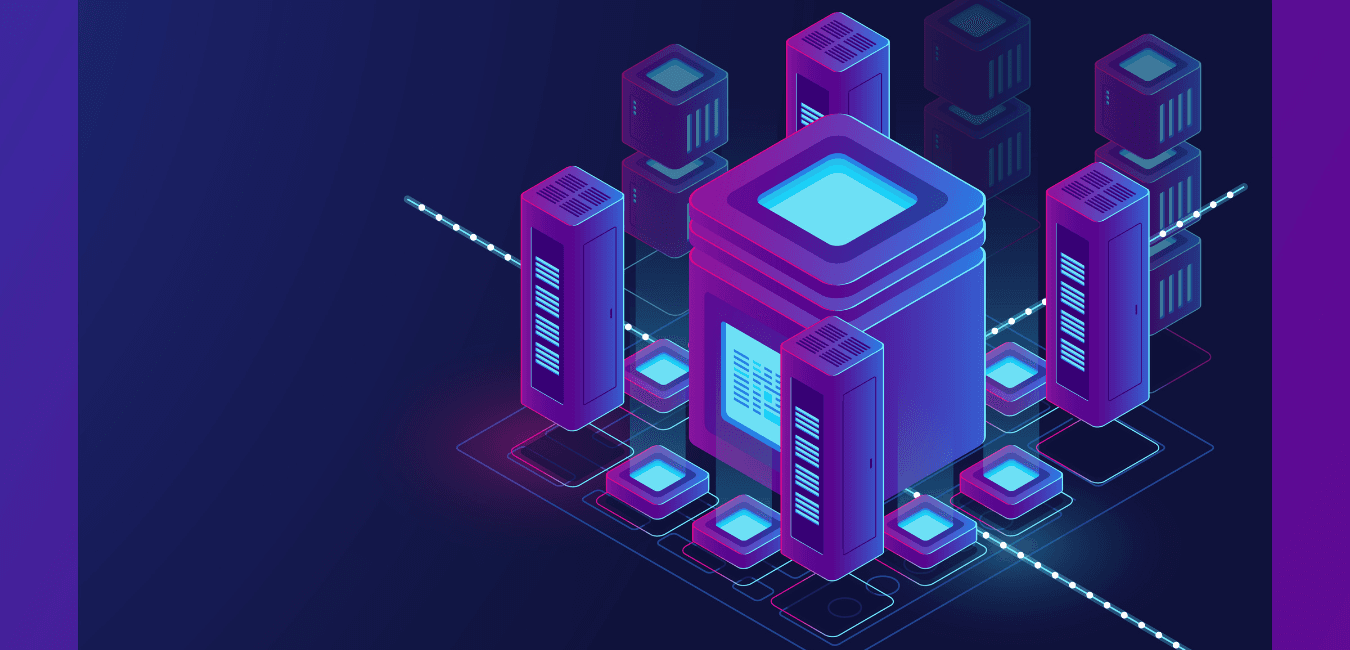
Today, more than ever, developers and businesses are turning to serverless computing as their preferred choice for building scalable, efficient, and cost-effective applications.
But what exactly is driving this shift towards serverless, and why has it become the go-to solution for modern development? In this article, we’ll delve deep into the world of serverless architecture, exploring the key factors and compelling reasons that make it the preferred option in today’s fast-paced tech environment. By the end of this journey, you’ll have a comprehensive understanding of why serverless serverless computing has become a dominant force in cloud computing and how it can benefit your projects.

Before we embark on this exploration of serverless architecture and uncover the compelling reasons that are propelling it to the forefront of modern software development, here is a brief about what is serverless architecture afterall…
What is Serverless Architecture?
A serverless architecture is a cloud-based computing model that allows developers to build and run applications without having to manage servers. Instead, developers focus on writing code, and the cloud provider takes care of the rest, including provisioning, scaling, and maintenance. Serverless computing shifts the focus from infrastructure management to writing code. Developers write functions or code snippets that are executed in response to events, without having to concern themselves with the underlying server infrastructure. This abstraction simplifies the development experience.
Top 10 Benefits of Serverless Architecture
Cost Efficiency: Pay only for the computing resources you actually use, reducing unnecessary infrastructure expenses.
Serverless architecture offers a paradigm shift in cost efficiency. Instead of provisioning and maintaining servers that often sit idle, you pay only for the exact resources consumed during the execution of your functions. This eliminates the need to invest in excess capacity, resulting in significant cost savings. Your organization can allocate resources more effectively and allocate funds to other critical areas. Thus, serverless architecture benefits businesses in terms of value for money.

Scalability: Automatically scale to handle varying workloads without manual intervention, ensuring optimal performance.
Serverless platforms excel in scalability. They can automatically adjust the number of compute resources allocated to your application based on incoming requests or other triggers. This dynamic scaling ensures that your application remains responsive during traffic spikes without the need for manual intervention. Whether it’s a sudden surge in users or a gradual increase in load, serverless architecture has you covered.
Simplified Development: Focus more on code and application logic, as the serverless platform manages infrastructure-related tasks.
Developers can shift their focus from managing infrastructure to writing code and developing application logic. Serverless platforms abstract away many of the complexities associated with traditional server management. This simplification allows developers to be more productive, as they can allocate their time and energy to creating features and functionalities that add value to the application.
Faster Time-to-Market: Rapidly develop and deploy applications, enabling quicker delivery of new features and updates.
Serverless architecture accelerates the development cycle. With reduced infrastructure-related tasks and simplified deployment processes, development teams can iterate faster. This agility translates into quicker time-to-market for new features and updates. Businesses can respond rapidly to changing market demands and stay competitive.
Reduced Maintenance: Offload operational tasks like patching, security, and server management, minimizing maintenance overhead.
Serverless platforms handle various operational aspects, including security patching, server provisioning, and system maintenance. This offloading of maintenance tasks reduces the burden on IT and operations teams. It also minimizes the risk of human error, ensuring that your applications remain secure and up-to-date without additional effort.
Automatic Scaling: Seamlessly handle traffic spikes and surges, maintaining responsiveness and availability.
Automatic scaling is one of the core strengths of serverless architecture. When your application experiences increased demand, serverless platforms can dynamically allocate additional resources to handle the load. This ensures that your application maintains optimal performance, even during unexpected traffic spikes, without any manual intervention.
Fault Tolerance: Built-in redundancy and failover mechanisms enhance application reliability.
Serverless platforms often come with built-in redundancy and failover mechanisms. If one instance of your function fails, the platform can automatically reroute traffic to healthy instances, minimizing downtime and enhancing the overall reliability of your application.
Pay-as-You-Go Pricing: Optimize costs with a granular, usage-based pricing model for resources and execution time.
Serverless follows a pay-as-you-go pricing model, allowing you to optimize costs. You’re billed only for the actual compute resources and execution time your functions consume. This granularity in pricing enables cost predictability and flexibility, aligning expenses with actual usage.
Developer Productivity: Leverage tools and integrations to streamline development and deployment processes.
Serverless ecosystems provide a wealth of tools and integrations that streamline the development and deployment processes. From code deployment pipelines to monitoring and debugging tools, developers can leverage a rich ecosystem to boost their productivity. This results in faster development cycles and improved collaboration within development teams.
Ecosystem Support: Access a growing ecosystem of serverless services and solutions, expanding your application capabilities.
Serverless architecture offers access to a growing ecosystem of services and solutions. These services can extend the capabilities of your application without the need for custom development. From AI and machine learning services to databases and messaging queues, the serverless ecosystem empowers your application to do more with less effort.

Key Considerations for Serverless Architecture
When contemplating serverless architecture, several critical questions come to mind. These inquiries revolve around the efficient allocation of computing resources, cost optimization, and scalability. Businesses must ask whether a serverless approach aligns with their application’s needs and traffic patterns. Additionally, understanding the implications of vendor lock-in and security concerns is paramount. The choice between building monolithic or microservices-based serverless applications is another crucial decision point. By delving into these questions, organizations can make informed choices and harness the benefits of serverless computing while mitigating potential challenges.
Top 15 Serverless Platforms in 2023, in order of Popularity:
- AWS Lambda: AWS Lambda is part of Amazon Web Services. Lambda serverless computing offers unmatched flexibility and ecosystem integration, empowering developers to execute code in response to various events.
- Google Cloud Functions: Google Cloud Functions provides serverless computing on the Google Cloud Platform, allowing developers to build and deploy event-driven applications using Google’s infrastructure and services.
- Microsoft Azure Functions: serverless computing in Azure uniquely integrates with the Microsoft ecosystem, offering seamless connectivity to Azure services and enterprise solution

FAQ
Q1: How does serverless architecture in AWS benefit organizations in terms of cost and scalability?
A1: Serverless architecture in AWS, powered by AWS Lambda Service, offers cost benefits like most cloud offerings, by charging only for the actual compute time used. Lambda serverless computing also provides automatic scaling, ensuring that applications can handle varying workloads efficiently.
Q2: What are the key advantages of implementing microservices in a serverless cloud computing environment?
A2: Microservices and serverless computing can complement each other well when used in combination, offering a powerful approach to building modern, scalable, and efficient cloud-based applications.
Microservices architecture breaks down a complex application into smaller, independent services that can be developed, deployed, and scaled individually. Each microservice typically corresponds to a specific functional component of the application.
In a serverless cloud computing environment, serverless functions can serve as microservices.Each serverless function can encapsulate a specific piece of functionality within your application.
Microservices and serverless cloud computing complement each other by allowing developers to create highly modular, independently deployable components. This approach enhances agility, scalability, resource efficiency, and fault tolerance, making it easier to manage complex applications.
Q3: How does AWS Lambda architecture fit into the overall serverless AWS architecture, and what are its primary use cases?
A3: AWS Lambda is a key component of serverless AWS architecture, enabling event-driven, serverless computing. Amazon serverless computing is commonly used for tasks like data processing, automation, and building server
Still unable to decide what is best for your next development?
AUTHOR
Megha S.
Have a project in mind?
Let's Discuss!
Build stunning & premium web apps with our top-rated Development Team & Accomplish your Business Goals Lightning Fast.
Our Services
Featured Blogs

Top 7 Methods to Select the Best Features for Your MVP
28 February, 2024

A Music Streaming App: from the Designers’ Desk
20 February, 2024
Have a project in mind?
Let's Discuss!
Build stunning & premium web apps with our top-rated Development Team & Accomplish your Business Goals Lightning Fast.

